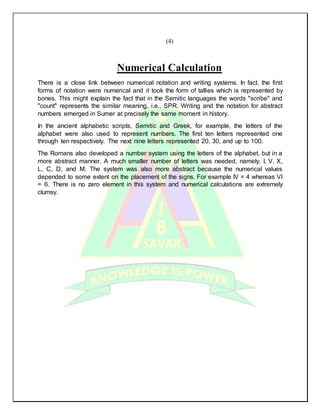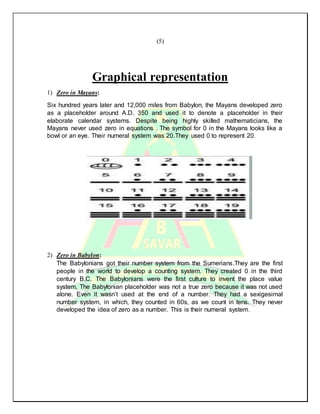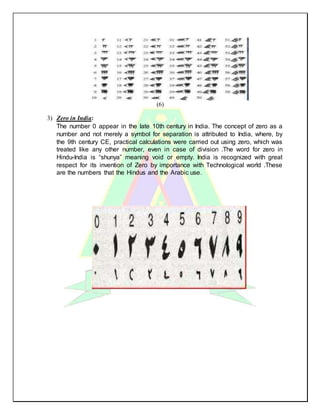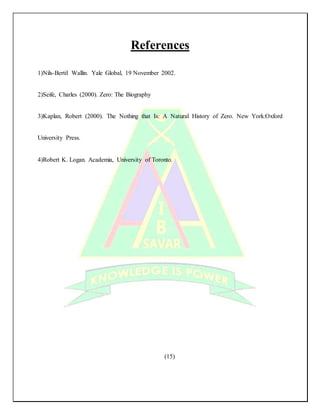This document is a term paper submitted by Zulfikar Pasha Dipto on the mystery of zero. It includes an acknowledgement, abstract, table of contents, and introduction section. The acknowledgement thanks various individuals for their support and guidance. The abstract provides a brief overview of the history and development of zero in different cultures from 700 BC to 1600 AD. The introduction discusses how zero was originally viewed as an empty space rather than a number, and how its usage and acceptance evolved over time in cultures like the Babylonians, Greeks, Indians, and others.




















